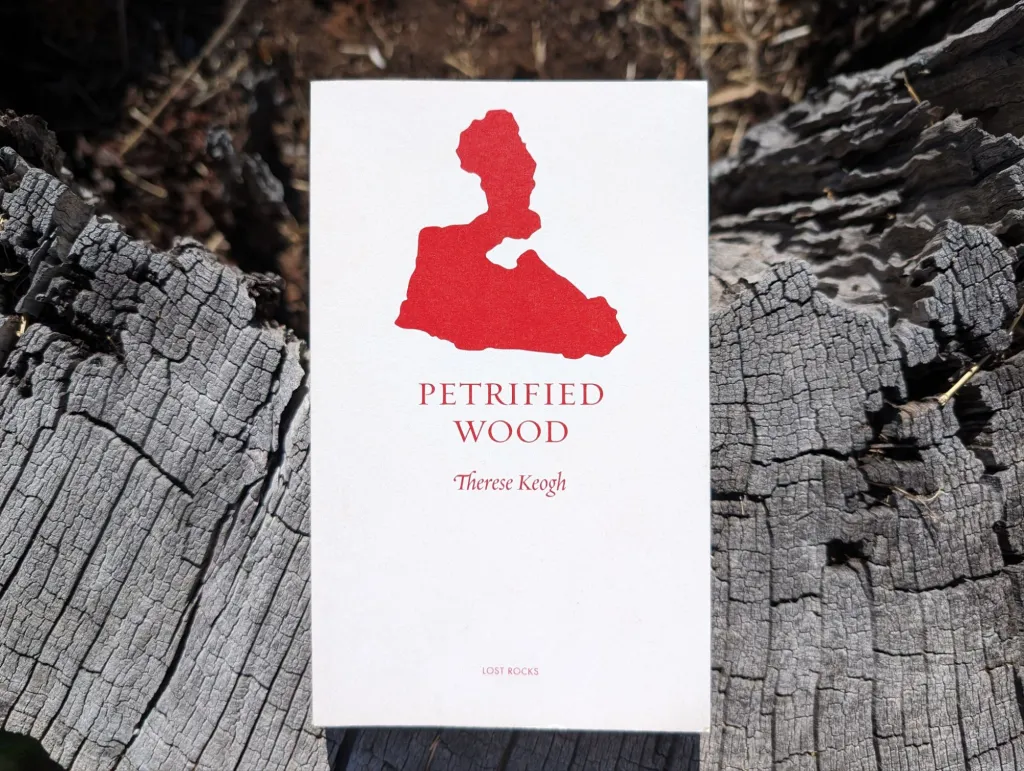Fictionella about woodcutting and ancient trees
Some years back I heard about a project inspired by a found rock board with missing rocks. When I first heard of the project, I bought one of the books. Later, visiting the Melbourne Art Book Fair, I was thrilled to meet the A Published Event team behind the project and to add another book to my collection.

“Petrified Wood” by Therese Keogh is a fictionella told in first person perspective by someone who is visiting a forest in Germany. The narrative sways back and forth between ruminations on a 7,000 year old piece of petrified wood and modern day woodcutting.
This is a thoughtful book that experiments with form in a way that each page almost seems like a free verse poem, interspersed with black and white, low-resolution images of fossilised wood. Cutting wood is interpreted as a skill, an art form and a way to examine archeological findings from millennia gone by. Keogh presents each page as a distinct thought but they are all clearly linked together in the same way as the very tree rings Keogh considers.
I think it’s important to note that this is not a short piece of fiction in the conventional sense. There isn’t a strong sense of narrative but rather a feeling, or a knowing. There is little in the way of characters or even a sense of time, and Keogh focuses instead on place and connection. I was curious to see that there was an absence of moral judgment on woodcutting and, more broadly, deforestation. Instead of being a destructive force on nature, Keogh explores woodcutting as a participation with nature.
An original and thought-provoking interpretation of petrified wood.











